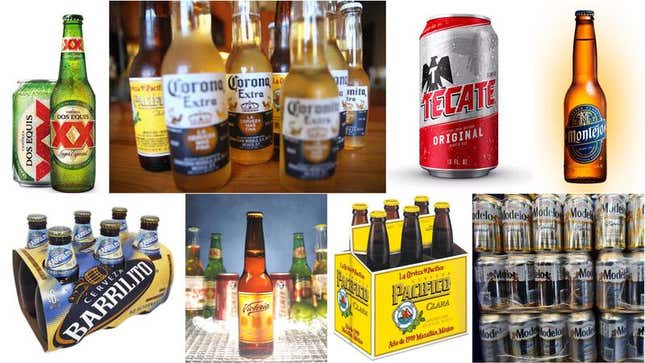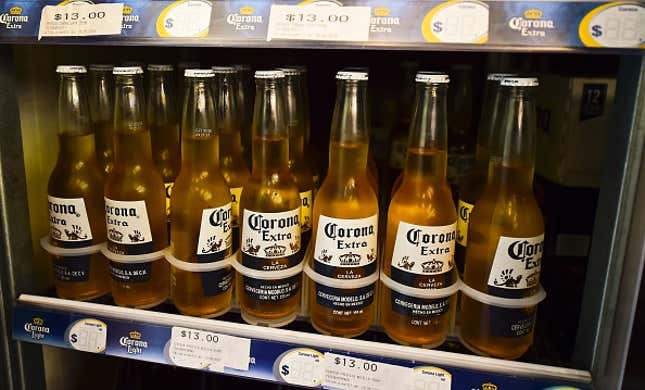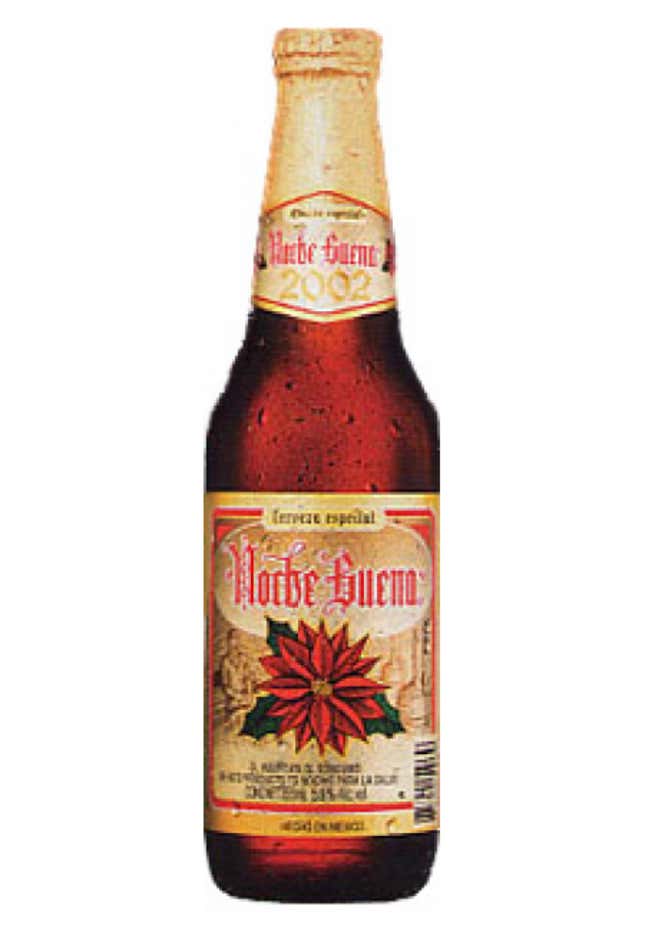
Welcome to Gateways To Drinkery, where The Takeout offers an entry-level course on our favorite libations, and some suggestions on where to start drinking them.
Mexican beers
The lowdown: If you’re American, there’s a good chance that the first international beer you drank came from Mexico. Of the top five most popular imported beers in America, three—Corona, Modelo Especial, and Dos Equis Lager—are Mexican, and, taken together, have solidified our southern neighbor’s reputation as a reliable producer of light, easy-drinking beers.
While it’s true that many of Mexico’s major beers are fizzy and pale and great for a hot day on the beach, it’s also true that Mexico—the world’s sixth largest beer producer and the top exporter—produces more varieties of good industrial beer than just about anyplace else on Earth. Were there some sort of craft beer apocalypse and only big breweries survived, Mexico is where you’d want to take shelter.
Mexico has produced fermented drinks of one kind or another since pre-Hispanic days, and beer has been consumed, albeit in limited quantities, since the 16th century. But it wasn’t until the second half of the 19th century, following the short-lived reign of the imported Habsburg Emperor Maximilian I (1864-67), that beer began its Mexican ascendency. Initially advertised as medicine, beer was held up as a clean and modern (read: European and white) alternative to the indigenous brew called pulque, a murky, volatile drink made by open-fermenting agave sap. The famous clear bottle used by Corona, which leaves the hop oils vulnerable to overcooking in the sun and gives the beer its perennially stale smell, was chosen to advertise the drink’s clarity and cleanliness, flavor be damned.
Between the 1860s and 1900, small breweries opened throughout the country, from Cervecería Pacífico in the northwestern state of Sinaloa (1900), to Cervecería Toluca outside Mexico City (1865), to Cervecería Yucateca in the tropical south (1869). Cervecería Modelo launched in Mexico City in 1925 with Modelo Especial and Corona and almost immediately began consolidating its power. Over the years, a long series of acquisitions and mergers has yielded two big players: Cervecería Cuauhtemoc based in the northern city of Monterrey (later Cervecería Cuauhtemoc Moctezuma and now officially Heineken Mexico, though no one calls it that), and Grupo Modelo. Restaurants and cantinas around Mexico will pretty much all have distribution deals with one of these two groups and serve only the beers from that group’s roster.

The taste: Mexico’s industrial beers fall, basically, into one of two groups: clara (pale) or oscura (dark). The vast majority of Mexican beer sold in the U.S., including Corona, Modelo Especial, and Dos Equis (plus Tecate and Pacífico, also in the top 10 imported beers in the U.S.), are in the former category. Though there’s some variation between the claras, they are all light, fizzy, and mild, with little or no bitterness or malt. This is what you think of when you think of Mexican beer.
Darker oscuras have a longer history in Mexico and are largely variations on an old European style known as the Vienna lager, popularized during the ill-fated reign of the Vienna-born Maximilian (Lisa Grimm wrote a great piece on this in 2012 for Serious Eats). Heavier, richer, and maltier than their pale cousins, the oscuras are also far more varied in flavor. Indio, a Cuauhtemoc beer, is often sold as a cerveza oscura, even though its mild flavor differs only slightly from its lighter cousins. Bohemia Obscura, first produced in 1891 and also owned by Cuauhtemoc, is more characteristic of the style: highly aromatic, toasted, and sweet. If malty beers are your thing, this is the one to seek out. Victoria, one of Mexico’s oldest beers, remains the most popular of the oscuras and falls somewhere in the middle, richer than Indio, but milder than Bohemia (it also makes a mean michelada).

Possible gateway: Well, Corona, obviously, but once you’ve passed that threshold it’s best not to turn back. Most everyone in Mexico has their favorite national beer based on a range of preferences—flavor profile, but also geography and design.
Until about a decade ago, your choices even in industrial beers were limited by geography. Tecate, Indio, and Pacifico, for instance, were all specific to the north. Montejo and León, produced by Cervecería Yucateca (now part of Modelo), were consumed primarily in the south. Even today, driving through Baja might lead you to believe that Tecate and Pacifico are the most widespread beers in Mexico, while Estrella, also owned by Modelo, is still consumed almost exclusively in the state of Jalisco. In Mexico City, though, there’s little you won’t find somewhere or other.
The geographic divisions started to break down in Mexico City about 12 years ago when Indio introduced the first twist-off lids. Carta Blanca and Superior, two other Cuauhtemoc brands from the north, entered next, followed more recently by brands like Pacífico and Montejo. But even now that just about everything has made its way to the capital, some beers remain more common than others. Of the oscuras, the most common are Victoria, Bohemia Obscura, Indio, Dos Equis Ambar, and Negra Modelo. Of the claras, you’ll most likely be offered Modelo Especial, Pacífico, Bohemia Clara, Corona, or Dos Equis Lager.

Next steps: Since the flavor profiles of these beers don’t vary enormously, the next step mostly amounts to sampling some of the less common industrial beers such as Carta Blanca, Superior, Montejo, and Barrilito. The real advanced 202-level move is to get your hands on Noche Buena, a Vienna-style dark beer produced and distributed by Cuauhtemoc only in the months leading up to Christmas (hence its name, which means Good Night, the term used in Mexico for Christmas Eve, and the traditional Christmas Eve feast in the Philippines).
You’ll understand the deeper purpose of Mexico’s industrial beers—particularly the claras—the first time you drink one as an easy, refreshing palate cleanser between sips of good tequila or mescal.
Talk like an expert: The whole point is that you don’t need to be an expert to drink these beers, and, frankly, to make too much of a fuss about them is to miss the point. Mexico is big on brand loyalty, so the most important thing, really, is to have a favorite. The reasons don’t much matter. It might be because you like the taste. It could also be that you like the label (my favorites, Pacifico and Montejo, are a combination of both). The point is to make a decision and stick to it.
When you go out to eat, ask immediately what beers are available. As the server lists them, you should be able to quickly tell which group they’re selling, so, if you’re feeling cheeky, you can interrupt to ask for your preferred Modelo or Cuauhtemoc brand. Otherwise, you should feel free to stop the sever listing once they get to your favorite. And if all they’ve got is Corona, at least pretend to be disappointed.